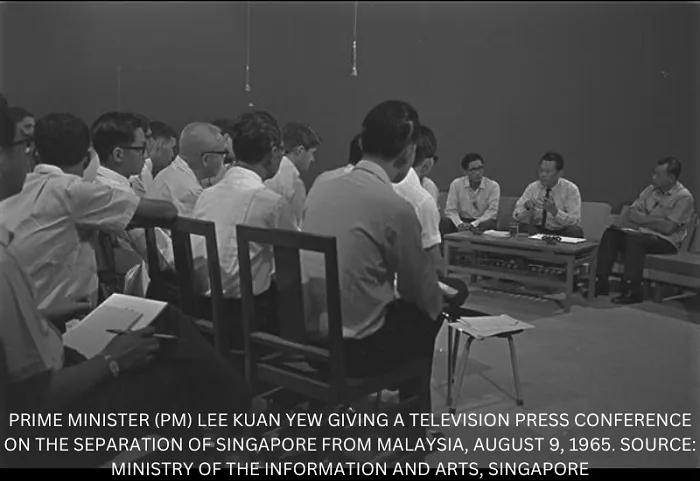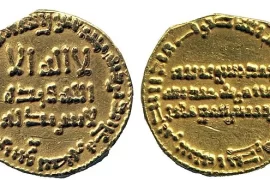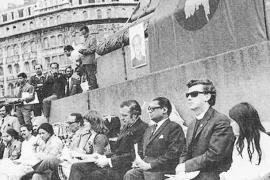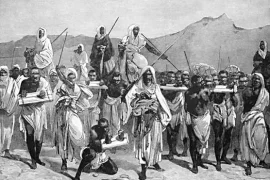The separation of Singapore from Malaysia on August 9, 1965, was a significant event in Southeast Asian history. This unexpected turn of events left many puzzled, as Singapore had only merged with Malaysia two years earlier in 1963. The separation had lasting implications for both countries and shaped their respective paths to development. The major reasons behind Singapore leaving Malaysia were Political, economic, cultural, and social differences, as well as disparities. In this article, we will delve into these underlying reasons for why Singapore left Malaysia.
Historical Background
To understand why Singapore left Malaysia, it’s crucial to examine the historical context that led to the merger in the first place. In 1959, Singapore gained self-governance as a fully self-ruling state within the British Empire. However, it faced numerous challenges, including limited land area, lack of natural resources, and a predominantly Chinese population. The People’s Action Party (PAP), led by Lee Kuan Yew, sought to address these challenges by implementing policies to transform Singapore into a modern, economically prosperous city-state.
In fact, Lee Kuan Yew, in his inaugural speech upon the establishment of the PAP on November 21, 1954, openly supported the idea of a union between Singapore and Malaya.
Why did Singapore merge with Malaysia?
Lee Kuan Yew’s People Action Party believed that joining Malaysia, which was a larger and resource-rich country, would provide Singapore with the economic and political stability it needed for long-term development.
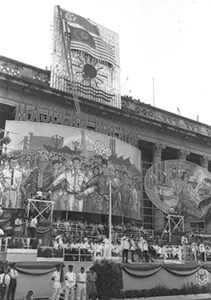
The merger was also seen as a way to forge a common identity among the ethnically diverse populations of Singapore, Malaysia, and other territories like Sabah and Sarawak. The leaders of both Singapore and Malaysia envisioned a united and harmonious nation that would be able to overcome racial and religious differences and work together for progress.
Challenges in the Merger
However, the merger between Singapore and Malaysia faced significant challenges. One of the key issues was the disparity in political ideologies between the PAP and the ruling United Malays National Organisation (UMNO) in Malaysia. The PAP championed multiracialism, while UMNO was Malay-centric and favored affirmative action policies to protect the Malay majority. These ideological differences led to tensions and disagreements over various issues, including language policies, citizenship rights, and economic policies.
Economic Disparities
Economic disparities between Singapore and Malaysia also played a role in the separation. Singapore was a highly developed and prosperous trading port, while Malaysia, with its vast land area and abundant natural resources, had a more diverse economy. Singapore contributed significantly to Malaysia’s economy, but there were concerns among some Malaysian politicians that Singapore was becoming too economically dominant and would pose a threat to the economic interests of other states in Malaysia. This perception of economic disparity fueled tensions and strained the relationship between Singapore and Malaysia.
Cultural and Social Differences
Cultural and social differences were also factors that contributed to Singapore’s departure from Malaysia. Singapore had a predominantly Chinese population, while Malaysia had a mix of Malay, Chinese, Indian, and other ethnic groups. There were concerns among some Malay leaders in Malaysia that the Chinese majority in Singapore would dilute the Malay culture and threaten the position of the Malay community. This led to tensions and suspicion, particularly with regards to issues such as language policies, citizenship, and the position of Malays in Singapore.
Political Breakdown and Separation
The tensions between Singapore and Malaysia eventually escalated, leading to a breakdown in political relations. In 1965, Malaysia expelled Singapore from the Federation, citing irreconcilable differences. The separation came as a shock to many, and Singapore was forced to become an independent nation abruptly. The move was met with mixed reactions, with some Singaporeans feeling apprehensive about the future and uncertain about how the tiny island nation would survive on its own.
Aftermath and Impact
The separation from Malaysia had a profound impact on Singapore’s trajectory as a nation. Initially, there were concerns about Singapore’s viability as an independent state, given its small size, lack of natural resources, and limited economic prospects. However, under the leadership of Lee Kuan Yew and his government, Singapore embarked on a remarkable journey of nation-building and economic development.
Singapore implemented pragmatic and pro-business policies, focusing on areas such as education, infrastructure, and trade. The government attracted foreign investments, built a strong financial center, and established a reputation for being a corruption-free and efficient nation. Singapore became a global hub for trade, finance, and technology, and its economy thrived. Today, Singapore is one of the most prosperous and advanced economies in the world, with a high standard of living and a diverse, multicultural society.
The separation from Malaysia also had social and political implications for Singapore. The government adopted a policy of multiracialism, promoting social cohesion and harmony among its diverse population. The country invested in education and social programs to promote inclusivity and integration, and Singaporeans developed a strong national identity based on shared values of meritocracy, efficiency, and pragmatism.
On the other hand, Malaysia also went through its own path of development after the separation. The country pursued its own policies and priorities, and while it faced challenges, it also made significant progress in various sectors such as agriculture, manufacturing, and services. Malaysia has also developed into a diverse and vibrant nation with a rich cultural heritage.
Summary
The separation of Singapore from Malaysia was a complex event with multiple factors contributing to the decision. Political, economic, cultural, and social differences, as well as disparities, played a role in shaping this outcome. The vision of a united and harmonious nation did not materialize as expected, leading to the separation. However, both Singapore and Malaysia have moved on and charted their own paths to development. Singapore emerged as a global success story in a relatively short span of time.
The history of Singapore’s departure from Malaysia serves as a reminder of the complexities and challenges in nation-building. It also highlights the importance of effective governance, pragmatic policies, and a shared vision for the future. Today, Singapore and Malaysia maintain diplomatic relations and continue to collaborate in various areas. It reflects the evolving dynamics of their relationship. The separation has left a lasting impact on the history and development of both countries, shaping their respective destinies in Southeast Asia.
Why Singapore Left Malaysia: FAQs
When did Singapore separate from Malaysia?
The separation of Singapore from Malaysia took place on August 9, 1965. It marked a significant event in the history of Southeast Asia.
Why was Singapore separated from Malaysia?
The separation of Singapore from Malaysia was primarily driven by political, economic, cultural, and social differences, as well as disparities.
Reference Books
- Mauzy, Diane K.; Milne, Robert Stephen (2002). Singapore Politics Under the People’s Action Party. Psychology Press.
- Josey, Alex (1980). Lee Kuan Yew Vol. 2. Times Books International.
- Régnier, Philippe (1991). Singapore: A City-state in South-East Asia. University of Hawaii Press.
- Josey, Alex (2013). Lee Kuan Yew: The Crucial Years. Marshall Cavendish International Asia.
- Jayakumar, Shashi (2021). A History of the People’s Action Party, 1985-2021. NUS Press
- Abshire, John (2011). The History of Singapore. Greenwood
- Lee Kuan Yew (1998). The Singapore Story: Memoirs of Lee Kuan Yew, Vol. 1. Times Edition
- Fletcher, Nancy M. (1969). Separation of Singapore from Malaysia. Cornell University
- Ministry of Culture (1965). Separation: Singapore’s Separation from the Federation of Malaysia.
- Oei, Anthony (2015). Lee Kuan Yew: Blazing The Freedom Trail. Marshall Cavendish International Asia Pte Ltd.

